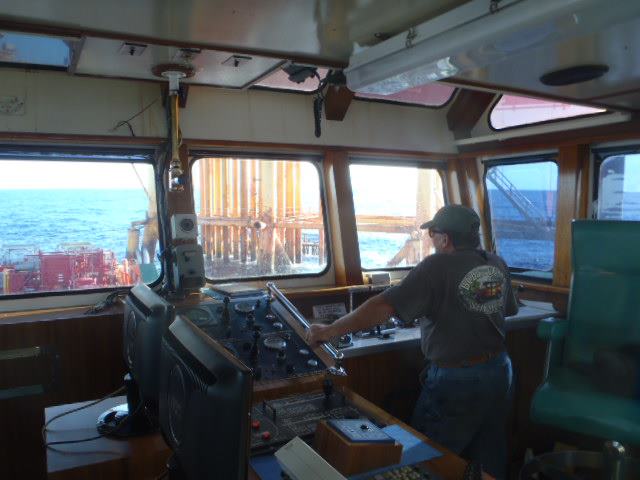Are You Risking Your Ship’s Safety Without Even Realizing It?
In the world of maritime safety compliance, even small oversights can lead to big trouble: flag state inspections, safety code violations, or worse, ISM Code violations. If your shipping operation depends on strong safety management—then understanding these pitfalls and knowing how to avoid them isn’t just helpful, it’s essential.
What Are ISM & SMS Compliance Issues & Why It Matters?
Before diving in, let’s clarify the terms. ISM compliance pitfalls refer to mistakes, gaps, or oversights when following the International Safety Management (ISM) Code. SMS compliance issues are problems within the Safety Management System that make your vessel or company non-compliant with ISM, SOLAS, or other maritime standards. These can trigger non-conformity reports, lead to safety code violations, or cause failed safety management audits by flag state authorities.
Failing to maintain maritime safety compliance through your SMS means more than just paperwork. It means risk to life, risk to vessel integrity, potential legal penalties, increased insurance costs, loss of credibility with charterers—and in severe cases, detention or accidents. That’s why recognizing the common ISM compliance pitfalls and establishing corrective action plans is so critical.
Common Pitfall #1 – Incomplete Documentation in your SMS
Many companies think that ticking a checklist is enough—but missing documentation or outdated logs often leads to ISM Code violations during audits or inspections.
What’s typically missing
- Records that haven’t been updated (e.g., maintenance logs, drills, inspections)
- Lack of proof for corrective actions taken after an incident
- Documents not matching what’s actually on board
How to avoid it
- Establish a document control process ensuring every log, checklist, and non-conformity report is current.
- Regular internal reviews of documentation—don’t wait for the flag state inspector.
- Use a digital system or software that tracks expiry dates, drill schedules, maintenance, and alerts you before things lapse.
Common Pitfall #2 – Poor Implementation of Corrective Action Plans
Spotting non-conformities is one thing; following through is another.
Where it breaks down
- Plans that are vague: “Fix issue” without clear steps or deadlines
- Responsible parties not defined
- No verification that the corrective action truly resolved the issue
How to avoid it
- Draft detailed corrective action plans with who, what, when, how.
- After implementation, audit or inspect to ensure the corrective measure fixed the problem.
- Record everything—including failures and adjustments. Non-conformity reports should loop back to verification.
Common Pitfall #3 – Insufficient Crew Training & Engagement
Even the best SMS won’t do much good if the crew doesn’t fully understand it or is not engaged.
Typical SMS compliance issues from lack of training
- Crew unfamiliar with emergency procedures
- Drill performance poor because it’s treated like a formal requirement rather than a lifesaving practice
- Misunderstandings about roles in safety management—who reports what to whom
How to avoid it
- Regular, realistic drills (fire, abandon ship, etc.), not just tick-box exercises
- Onboard workshops: make safety management personal, show how it protects them
- Feedback sessions: encourage crew to share safety concerns. Use their input in your SMS updates
Common Pitfall #4 – Neglecting Flag State Inspections & Audits
Flag state inspections and safety management audits are your chance to prove compliance—but they can also uncover hidden weaknesses.
Common failures in inspections
- Inconsistency between what’s documented and what’s practiced onboard
- Expired certifications or missing periodic inspections
- Inadequate evidence of inspections or monitoring of critical equipment
How to avoid it
- Keep a compliance calendar for all required surveys, inspections, audits
- Conduct mock audits internally to simulate what a flag state inspection will look like
- Maintain an accessible log of all survey results, certificates, and any ISM Code violations previously flagged—along with how they were remedied
Common Pitfall #5 – Overlooking Non-Conformity Reports (NCRs)
Non-conformity reports are not just formalities—they’re signals of where your maritime safety compliance is weak.
What companies often get wrong
- Ignoring minor NCRs until they become major
- Failing to analyze trends or repeated non-conformities
- Poor root-cause analysis: treating symptoms rather than causes
How to avoid it
- Document every NCR: every day’s small slip-up counts
- Use trend analysis: if multiple incidents stem from the same issue, you might have a systemic problem in your SMS
- Apply root-cause analysis methods (for example, 5 Whys) to drive corrective action plans that stop recurrence
Bringing It All Together with Best Practices
To avoid falling into these common ISM compliance pitfalls, here are some best practices that tie everything together:
- Continuous SMS Improvement – The SMS must evolve. Use audits, incidents, crew feedback to refine procedures.
- Stakeholder Responsibility – Assign roles clearly: safety officer, master, shoreside management must all be involved.
- Transparency and Communication – Share safety audit findings, non-conformity reports with crew. Open communication builds trust and accountability.
- Use Technology – Digital safety management tools can track compliance, generate alerts, manage corrective actions efficiently.
- Culture over Tick Boxes – Embedding safety in culture means people do the right thing even when no one is watching.
Final Thoughts
ISM compliance pitfalls and SMS compliance issues are common—but avoidable. From documentation lapses to underperforming corrective actions, from poor training to ignored non-conformity reports—each weak link threatens maritime safety compliance. But when you adopt robust safety code violation prevention, regular safety management audits, clear corrective action plans, and take flag state inspections seriously—you turn those risks into strengths.
Don’t let small oversights become costly disasters. Visit Short Maritime’s resources today to download our ISM Audit Checklist or schedule a Safety Management System review. Strengthen your SMS now—because safe seas start with smart compliance.






